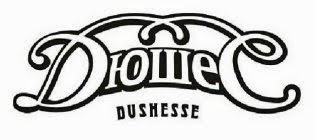Applicant sought to register the mark
ISLAND TROPICAL for "fruit-based snack food; snack mix consisting primarily of processed fruits, processed nuts and/or raisins." Examining Attorney Kevon L. Chisolm refused registration under Section 2(d), finding the mark likely to cause confusion with the registered mark
TROPICAL ISLAND BLAST for "fruit based snack food, namely, dried fruit mix." What's your decision?
In re Torn & Glasser, Inc., Serial No. 78967139 (October 20, 2010) [not precedential].

The Board, not surprisingly, found the goods to be in part legally identical. Applicant fruitlessly argued that the
actual goods of the parties are different, because Applicant sells its product in bulk while Registrant sells to individual consumers. The Board observed for the umpteenth time that its Section 2(d) determination must be made on the basis of the goods as listed in the involved application and registration, regardless of actual use.
Moreover, since the goods are in part identical, the Board must presume that they travel in the same normal channels of trade to the same classes of consumers.
Of course, when the goods are identical, a lesser degree of similarity between the marks is necessary to support a likelihood of confusion finding.
Applicant argued that the marks are readily distinguishable because its mark is dominated by the word BLAST and the marks have different sounds and meaning. The Board, however, did not agree that BLAST is dominant in Applicant's mark, primarily because BLAST "is somewhat suggestive in this context:" it "appears to be used as an intensifier, suggesting that consumption of registrant’s goods is 'a very enjoyable or thrilling experience.'"
The Board recognized that the marks have slightly different connotations: "TROPICAL ISLAND suggests a product from (or having some connection with) a tropical island, while ISLAND TROPICAL implies a product with a 'tropical' characteristic coming
from an island." But the Board found this to be "a very fine distinction at best," and it concluded that "the likely commercial impressions are the same."
In sum, the Board found that the similarities outweigh the differences in the marks.
The marks begin with the same two words and share very similar commercial impressions. Although the mark in the cited registration includes an additional term, that term appears at the end of the mark and is somewhat suggestive of the goods. As a result, it is unlikely to provide a significant distinction between them. To the extent that consumers notice the term BLAST in the cited registrant’s mark (or its absence in applicant’s), or otherwise distinguish the marks, they are likely to assume that the associated products are variations originating from the same source.
Applicant asserted that it was not aware of any actual confusion between the marks. Of course, there are two problems with that argument: first, the registrant has no chance to be heard on the issue, and second, likelihood of confusion is the test, not actual confusion. Moreover, the period of concurrent use was relatively short (three years) and the record lacked evidence of the scope of use of the involved marks.
Finally, Applicant complained that the Examining Attorney should have suspended prosecution while it sought a consent agreement from the Registrant. But the general rule is that an application will not be suspended "to give an applicant time to secure a consent agreement." (TMEP Section 716.02). Applicant provided no reason why that rule should not apply here.
And so the Board the confusion is likely, and it affirmed the refusal.
TTABlog comment: Do you agree with the Board's decision? Remember, any doubt must be resolved in favor of the prior registrant.
Text Copyright John L. Welch 2010.




































